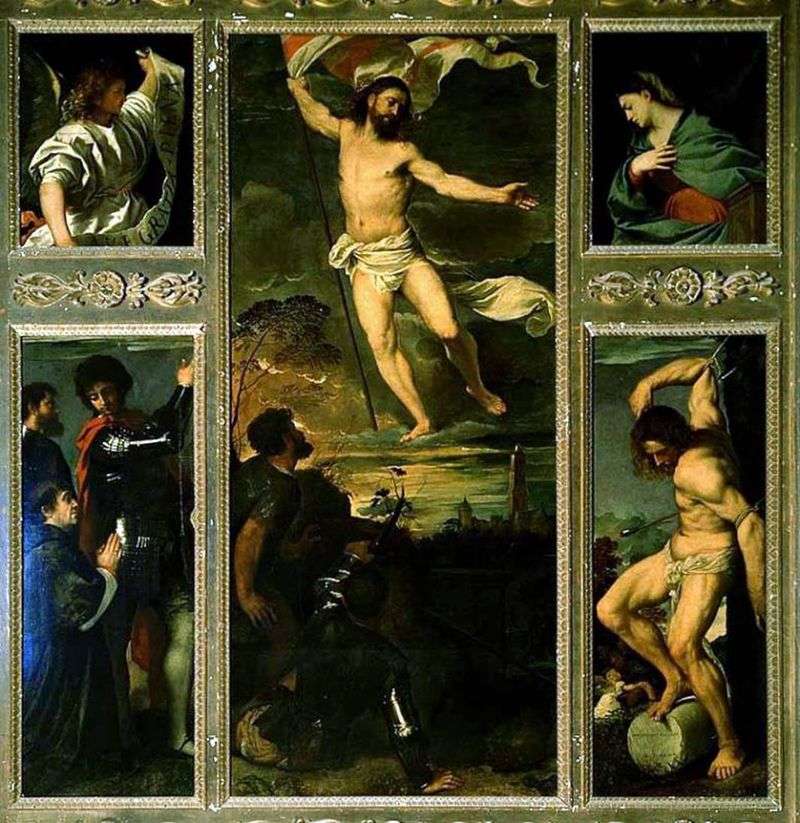
Polyptych Resurrection in Santi Nazarau e Celso in the city of Brescia was commissioned by Altobello Averoldi, the papal legate in Venice, in 1518/19. The format of the five panels is old-fashioned, but the dynamic relationship between Christ and St. Sebastian, predicting the triumph of both, anticipates the Baroque style.
Titian openly competes with the sculpture in two main figures, taking inspiration from the recently discovered Hellenistic statue of Lacoon and – in the case of Sebastian – one of the slaves – from the grave of Michelangelo for Julius II.
Titian’s impulse to capture bold gestures is hard to realize within the traditional polyptych structure, which required depicting various illustrated elements in a series of panels. This obsolete form was used at the request of the client, the papal legate Altobello Averoldi. He is also depicted with the holy patrons of the church, St. Nazarene and St. Celso, to whom he donated the altar.
New trends in Mannerism are also evident here, perhaps they are passed on to Titian through the work of Pordenone, and these elements subtly contribute to the dramatic intensity of the work. The landscape background is of the highest quality with a recognizable view of Brescia.
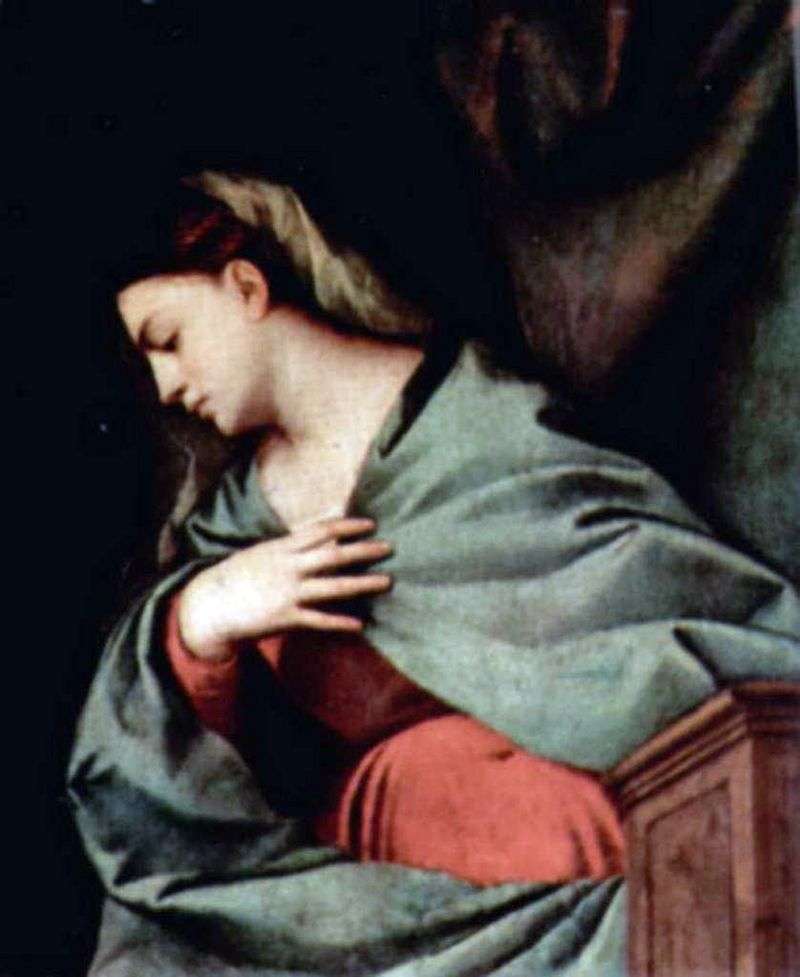 Resurrection of Christ (Altar polyptych Averoldi), right wing, scene above. Virgin Mary by Titian Vecellio
Resurrection of Christ (Altar polyptych Averoldi), right wing, scene above. Virgin Mary by Titian Vecellio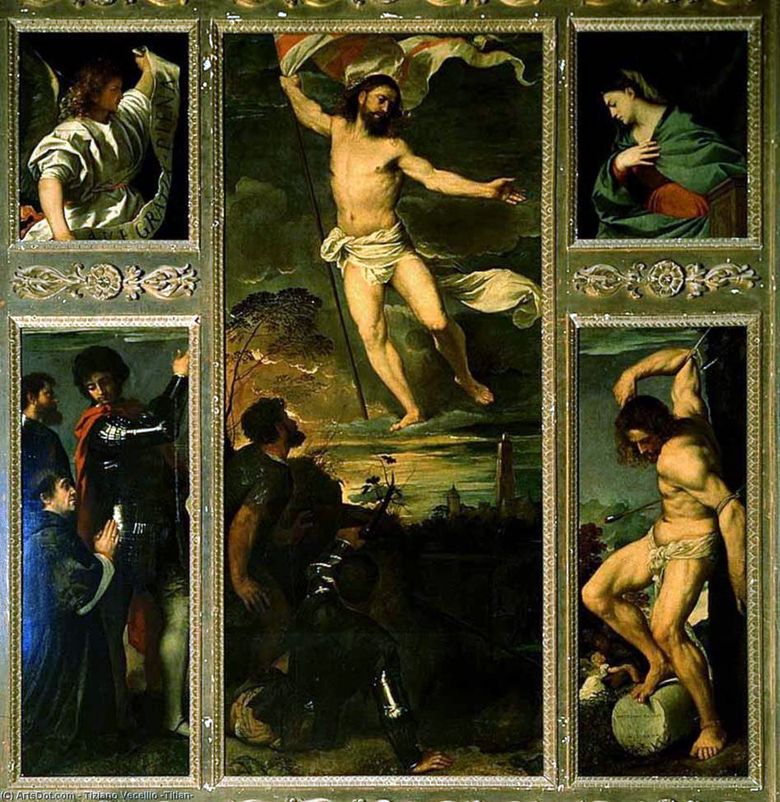 Polyptyque de la résurrection – Titian Vecellio
Polyptyque de la résurrection – Titian Vecellio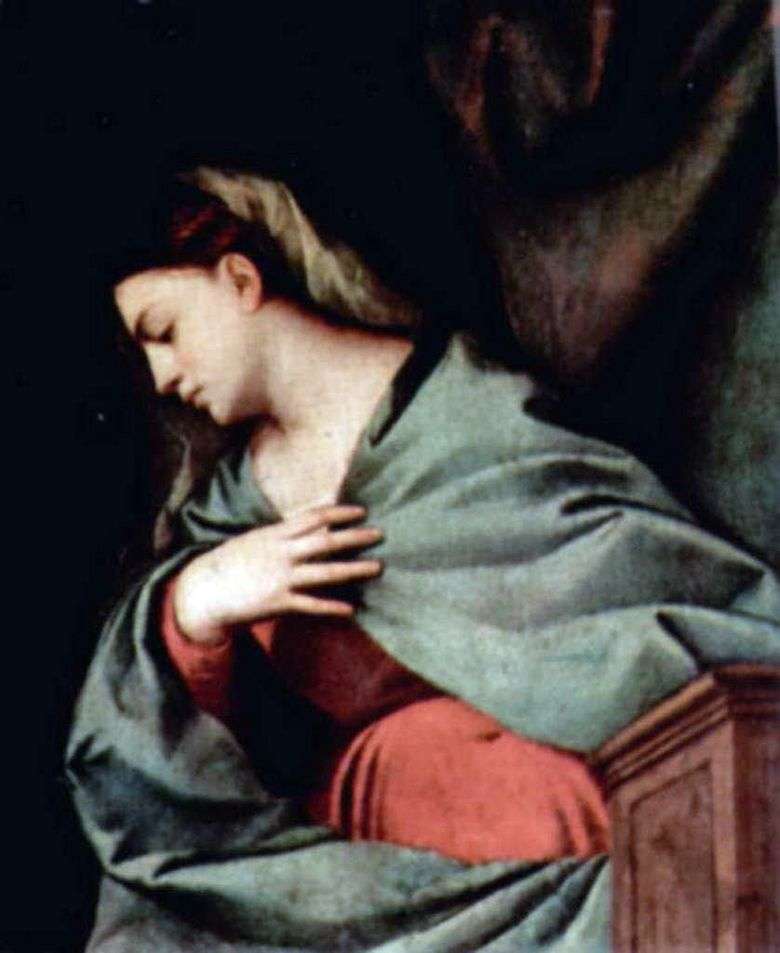 La resurrección de Cristo (Polyptych del altar de Averoldi), ala derecha, la escena de arriba. Virgen María – Tiziano Vecellio
La resurrección de Cristo (Polyptych del altar de Averoldi), ala derecha, la escena de arriba. Virgen María – Tiziano Vecellio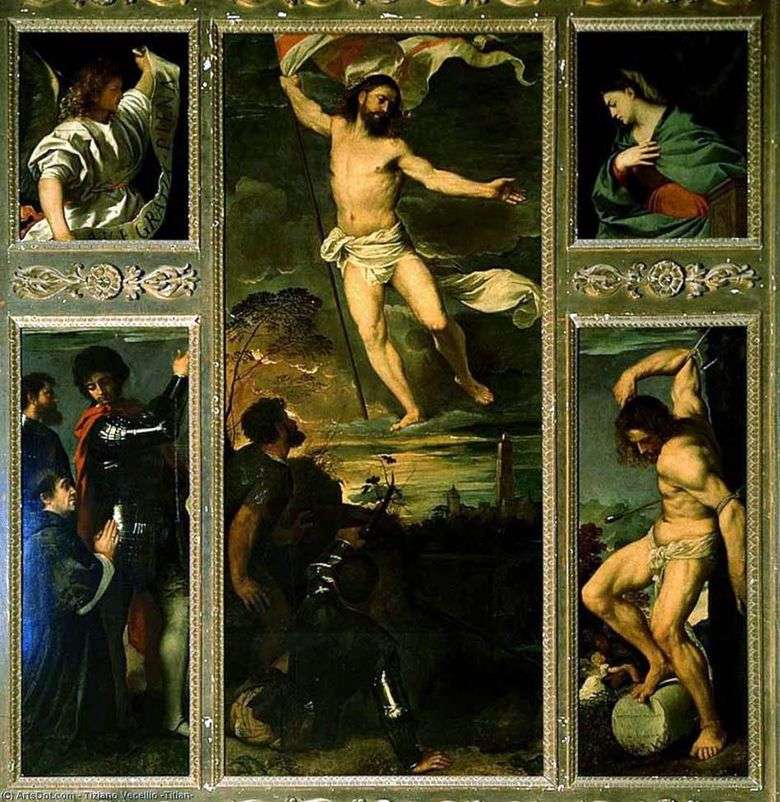 Resurrección del Políptico – Tiziano Vechelio
Resurrección del Políptico – Tiziano Vechelio La résurrection du Christ (polyptyque de l’autel d’Averoldi), aile droite, scène ci-dessus. Vierge Marie – Titian Vecellio
La résurrection du Christ (polyptyque de l’autel d’Averoldi), aile droite, scène ci-dessus. Vierge Marie – Titian Vecellio The Festival of Venus (Bacchanalia of Babies) by Titian Vecellio
The Festival of Venus (Bacchanalia of Babies) by Titian Vecellio The Feast of the Gods by Titian Vecellio
The Feast of the Gods by Titian Vecellio St. John the Baptist in the Wilderness by Titian Vecellio
St. John the Baptist in the Wilderness by Titian Vecellio